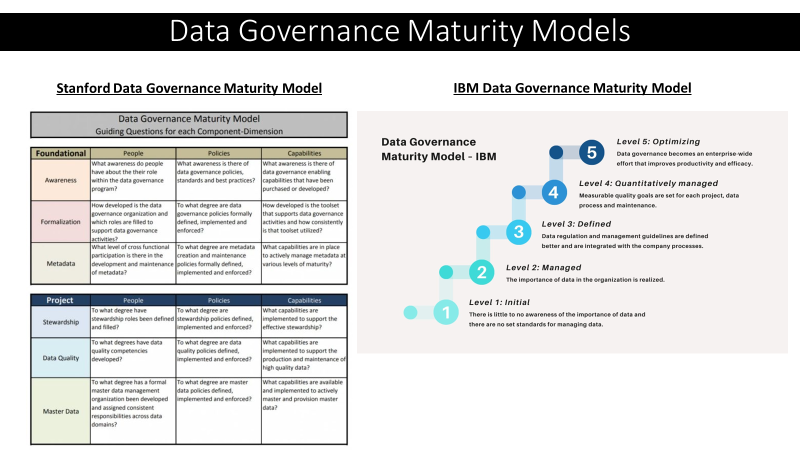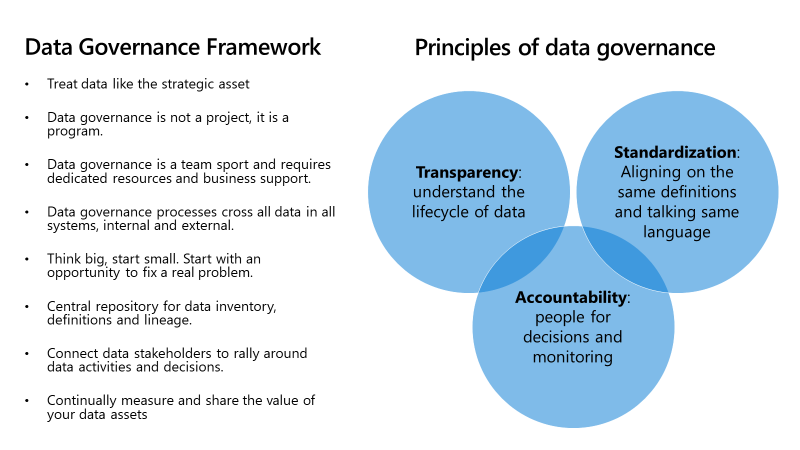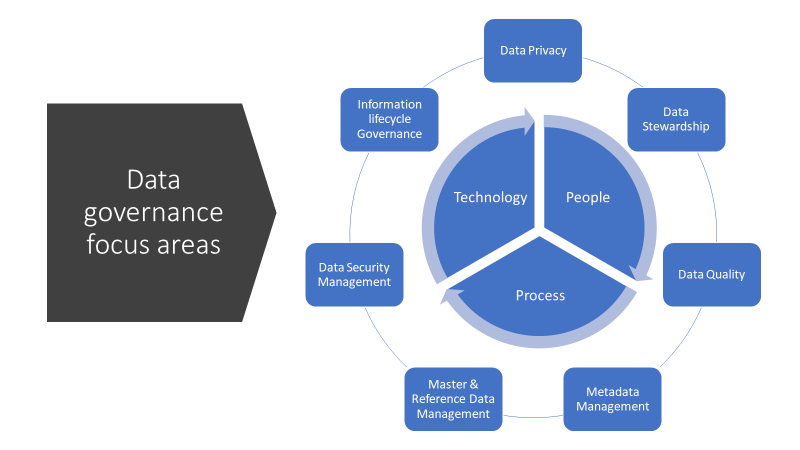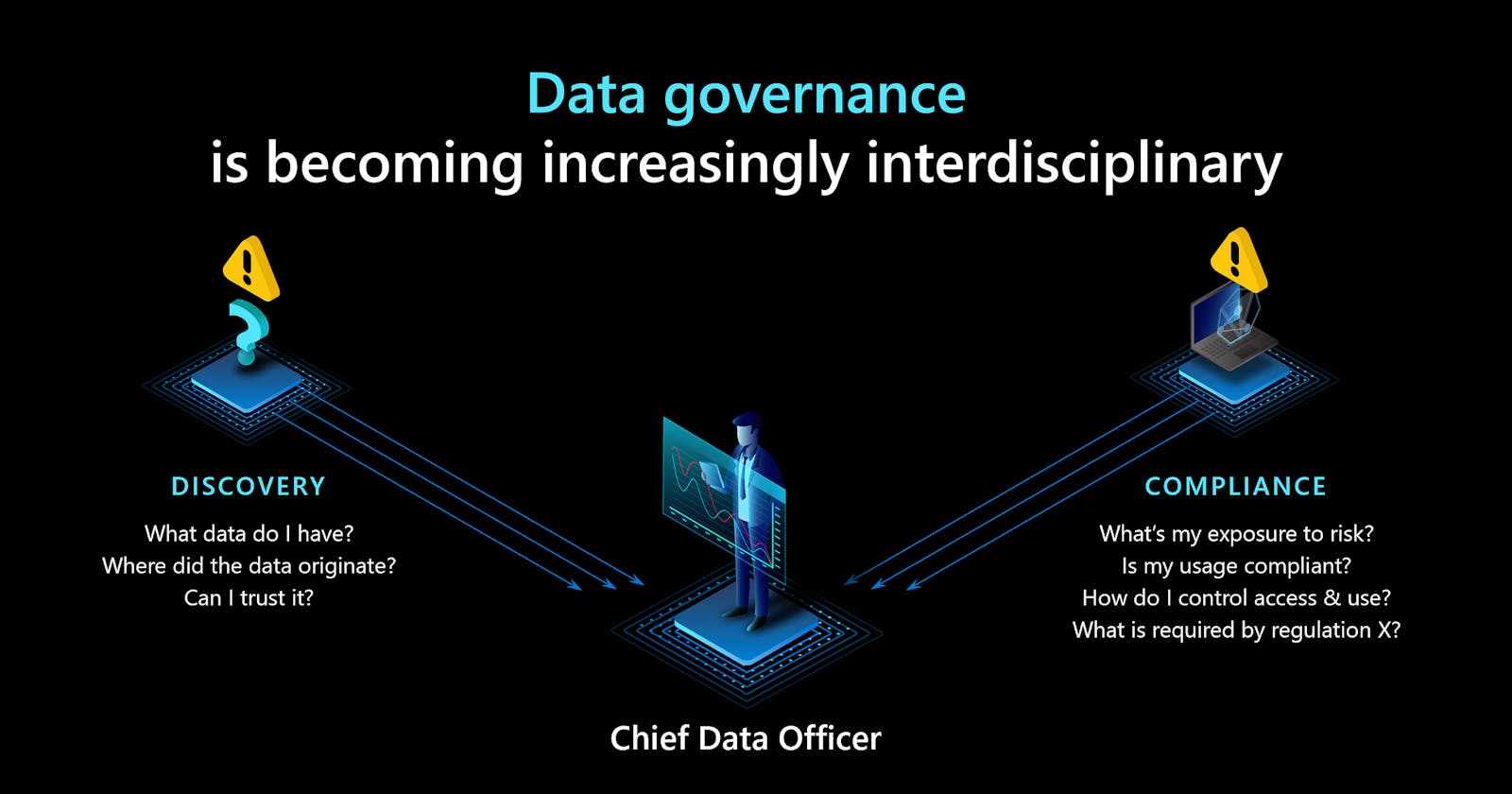#TheWhat

I know to some of us Data Governance is like a project or some sort of tool you need to deploy, but in essence, it involves the management and oversight of data-related processes within an organization. It majorly serves as a fundamental structure to ensure data quality, security, and compliance which operates as an ongoing program within an organization.
You can use the Data Governance Maturity Model to understand your organization’s current posture from a Data Governance standpoint.

#TheHow
For you to implement an effective Data Governance strategy, several frameworks exist to guide the process. These frameworks provide systematic approaches to developing and implementing Data Governance initiatives and enhancing your organization’s data management practices.

Embarking on the journey of establishing Data Governance is not an easy one as it raises crucial questions like Where and how does one start? What are the initial steps and prerequisites for implementation? Navigating these initial stages requires a comprehensive understanding of your organization’s existing data landscape and a clear roadmap for improvements.

During the implementation process of Data Governance, there are various tools designed to facilitate the construction of a robust Data Governance strategy. Leveraging these tools can simplify tasks such as metadata management, data lineage tracking, policy enforcement, and overall governance oversight. And this is where Azure Purview and Microsoft Purview shine.

Even after implementation, you need to be clear on: Who holds the responsibility for overseeing and executing these complex Data Governance endeavors? Because identifying the key stakeholders and establishing clear roles and responsibilities are pivotal to the success of the initiatives you want to drive.
#MeasuringSuccess
Now let’s say all is done, how do you measure success?
Measuring the triumph of a Data Governance initiative involves identifying key indicators of success. These indicators might encompass enhanced data quality, streamlined processes, improved compliance adherence, and bolstered decision-making based on reliable data insights.

When do you need data governance?
Now, in the current business landscape data has emerged as an indispensable asset, wielding profound significance across various dimensions. From a Competitive Advantage standpoint, the strategic utilization of data has the potential to propel your business ahead of its competition.
And we all know that data in its diverse forms, holds the key to uncovering insights into consumer behavior, market trends, and operational efficiency. If you can effectively harness this data and convert it into actionable intelligence, you gain a pivotal edge. For instance, analyzing customer preferences and purchase patterns can enable targeted marketing campaigns, personalized services, and innovative product development, giving a company a competitive edge by directly meeting customer needs.
Also, if you have a big enterprise or a registered business, compliance becomes your business. The importance of data extends to mitigating risks and adhering to regulatory frameworks. Failing to comply with data protection regulations, such as GDPR or HIPAA, can result in severe financial penalties and reputational damage. The comprehensive management of data, including secure storage, proper usage, and timely disposal.
In essence, data has transitioned from being merely a support function to becoming a driving force in strategic decision-making. Its capacity to fuel innovation, enhance operational efficiency, and ensure regulatory adherence underscores its paramount importance in shaping an organization’s success and competitiveness in today’s dynamic business environment.
So if these few points interest you, then you need Data Governance!
